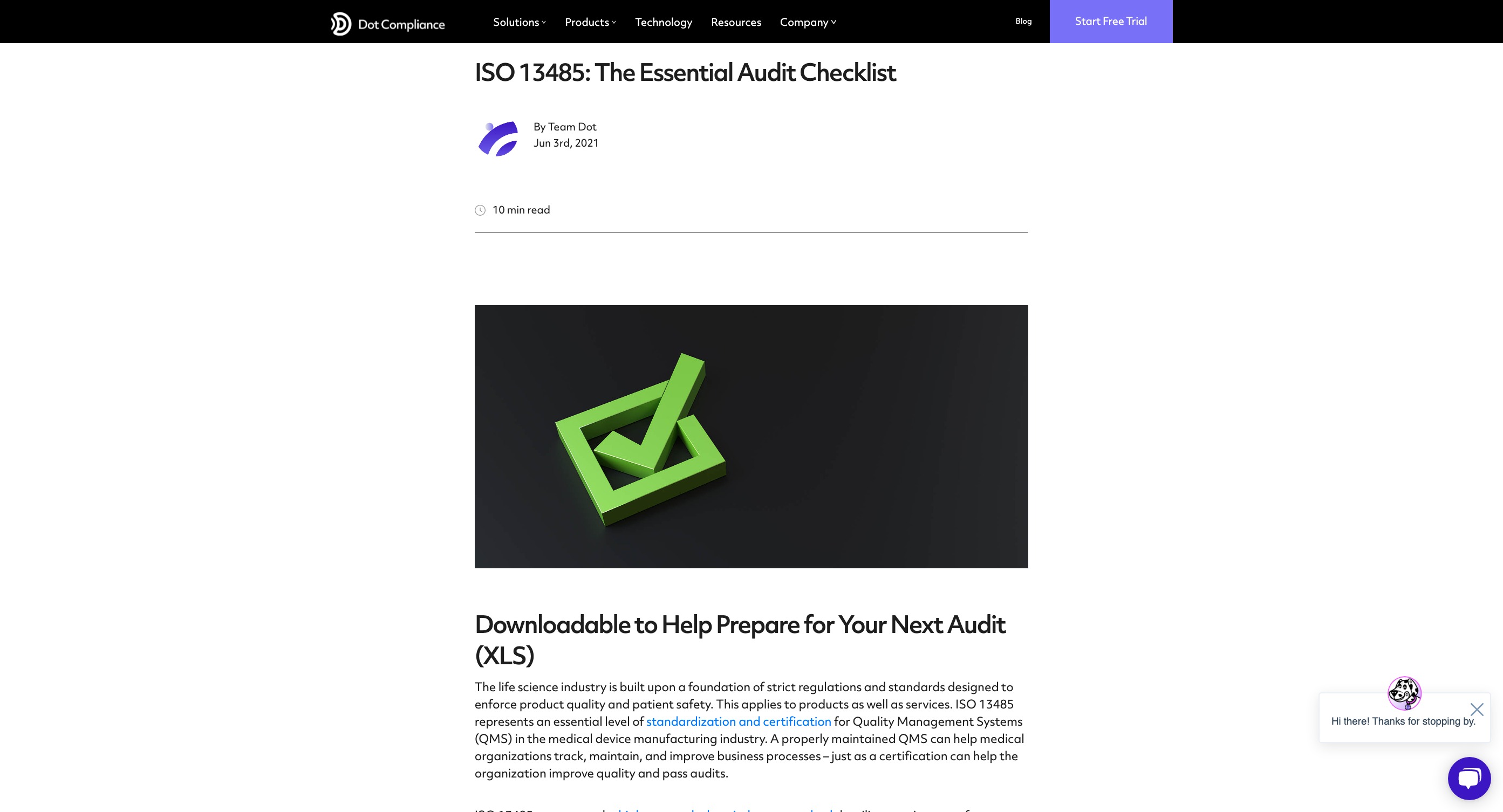
How to Create Value-Driven Content for B2B
There’s one thing every internet user has in common: we’re all here for the content. Until network engineers develop the capability to beam pure emotion directly into users’ brains, offering great content will reign as the best way to reach and engage with audiences. In B2B sales, where research and deliberation are always a big part of the purchasing journey, content marketing will remain the dominant marketing growth strategy for the foreseeable future.
The trouble with “content” is that it’s defined broadly enough to encompass pretty much anything you can host on a web server. When you’re dealing with B2B buyers who take their decision-making responsibilities seriously, empty video spectacle and irrelevant blog posts aren’t going to move the needle. You need to know your audience, understand what potential buyers want, and anticipate their future needs in order for your B2B content marketing strategy to be successful.
Ultimately, it’s all about building a bond with your audience by providing them with information, resources, and experiences that they truly value. To do that, you need to formulate a strategy based on knowing the value you can offer customers and creating value-driven content that delivers it. The most successful B2B companies understand this: 60% of them have a documented content marketing strategy.
To help you develop a winning strategy, we’ve compiled seven great tips for creating value-driven content for B2B marketing. First, let’s look at what defines value-driven content — and why it matters.
What is value-driven content?
Content marketing is the art of using blog posts, videos, infographics, whitepapers, and any other type of content you can think of to educate audiences about your products and nudge them toward conversion.
What makes content valuable is entirely up to your audience and their intentions. If your readers are looking to be educated – then the value can be provided by a “how-to”. If your audience is looking to be entertained then your value can be in provided a good story. If your audience is looking to be informed then provide them with newsworthy content. If you can combine at least 2 out of 3 of the above – you’ve created awesome content.
Therefore, the most important part of the value-added puzzle is in understanding your audience’s intentions and desires and focusing on that.
There are other pieces to the puzzle too. When that content is unique or exclusive – something your audience can’t easily find elsewhere – it becomes even more valuable. Value-driven (sometimes called value-based) content can come in many forms, but what it has in common is it’s focus on how your business can help your customers.

Understanding your value proposition – what makes your products or services unique from the competition and why leads should choose to buy from you rather than them – is crucial to developing value-driven content.
A good value proposition will connect the dots between your customers’ needs, which are their pain points and the problems they’re trying to solve; and the solutions you have to offer them. Understanding this equation gives you a reliable framework for creating content that delivers real value.
The Importance of Value-Driven Content
Pretend you’re a landscaping supply company. It’s the middle of a hot, dry summer, and you’ve got three content pitches to choose from: a photo gallery of exotic shrubs, a blog post about the history of horticulture, or a PDF guide to sourcing and caring for drought-resistant native plants.
All three of those might be high-quality and provide some kind of valuable engaging content. However, only the last option is likely to address the issues your customers are having right now, and more importantly, be connected to a solution.
This is where you should lean in – value-added content is not only about the reader. If you can connect the content to a solution and deliver the content as part of the buyer’s journey then the content not only adds value to the reader but also generates leads.
B2B buyers are looking for content that makes their purchasing decisions easier. 70% of them typically consume three or more pieces of content before they talk to a salesperson. The best way to demonstrate to these buyers that you understand their needs and respect their attention is to provide content with substantive value that meets them where they’re at.
How to Create Value-Driven Content for B2B
1. Create a Strategy Focused on Value-Driven Content
As we mentioned earlier, value can be subjective. You have to understand your audience’s goals and challenges to understand what they value and how that relates to the buyer journey. Remember, not all value-added content is part of the buyer-journey. The trick is finding the content that is.
Also, you need to recognize that leads at the top of your sales funnel won’t necessarily value the same content as leads at the bottom. Getting the timing and placement of your content right is crucial to delivering value. A comprehensive strategy for all funnel stages can ensure that you serve up the right content, to the right audience, and at the right time on their buyer’s journey.
2. Use Social Media to Listen to What Your Audience Wants
To add value to your content, you need to know your audience’s pain points, what they need, and what resources they’re hoping to find. The good news is, your audience is probably already telling you everything you need to know, but you just need to know where to find it.

Social listening tools can tune you into the thought leaders, hashtags, and trending topics that the customers in your industry care about. They help you find candid discussions to inform and enrich your content creation plans with information direct from the source.
3. Increase the Value of Your Most Popular Content
Sometimes, marketers strike gold with an article or video that really resonates. Whether they go explosively viral or quietly maintain a long tail of engagement, these are the pieces of content that have the most eyes on them. It makes sense to fill them up with as much added value as you can. Adding value to content could mean expanding a blog post into an ebook, turning a short how-to guide into an in-depth multi-part series, or simply adding timely updates to an article that elicits a lot of traffic. Consider how you can repurpose the winning content you already have to create more engagement in different channels or media.
4. Respect Your Audience’s Time by Simplifying
Got a 4,000-word article that’s full of brilliant insights and useful advice? Great! Now make a version of it for everyone in your audience who doesn’t have the time or inclination to read 4,000 words. Long-form content definitely still has it’s uses, but marketers do themselves no favors by hiding value in content that may be inaccessible to some segments of their audience. If you’ve got something worthwhile but long and/or complex, make a simplified version of it. Simplified or condensed content is also great for the fast-paced world of social media. Social media management tools can help you automate the process of converting and publishing it.
5. Create Tools, Resources, and Templates Your Audience Can Use
Everybody loves free stuff, and there’s no better way to provide value to your audience than to give them something that meets an actual need. For example, Fender doesn’t give away free musical instruments, but they do offer free apps for tuning guitars and learning chords. These giveaway products create positive associations with their audience and lead to future sales.

(Source: https://www.dotcompliance.com/blog/regulatory-compliance/iso-13485-the-essential-audit-checklist/)
B2B companies can provide free software tools, templates, tutorials, and calculators that relate to the products they offer. Such offers give leads a preview of the support and resources they’ll have access to if they become customers.
6. Provide Insights with Data and Statistics
Data provides the building blocks that marketers can use to tell compelling stories about their products, company, and industry. Subject data to statistical analysis and you can provide concrete insights that can answer your audience’s burning questions. Best of all is when you can use internal company data — exclusive data that only you possess — to provide your audience with useful, quantifiable information. One way to do this is the ever-popular whitepaper, or by an exclusive, downloadable report. Publishing data analytics and statistics can also get you quoted and backlinked by other sites, boosting your reach and authority.
7. Make Your Brand a Butler
As a guiding principle for your content marketing strategy, consider the idea of becoming a “brand butler.” This term describes an approach to marketing in which a brand actively supports their customers with services and tools designed to offer assistance beyond what the purchased product itself can provide. This type of service might involve apps, informative podcasts, a series of how-to guides, or any number of other forms of content. The idea is to provide real service, not just a value-added sales pitch. While this might seem like a lot to take on, it can be the natural evolution of a value-driven content marketing strategy.
Conclusion
On an internet that’s constantly bursting at the seams with new content, there’s no reason to expect that shallow, insubstantial marketing materials will keep your audiences engaged or capture their attention at all. To stay relevant, hold your audience’s interest, and build a loyal following, it is essential that you continuously create content that contains something of real value.
By listening to your customers, crafting a content marketing strategy that emphasizes value, and following the tips we’ve provided, you can leverage value-driven content to build stronger bonds with your audience. This strategy can vastly improve your content marketing campaigns’ efficacy and increase conversions and sales revenue over the long haul.











